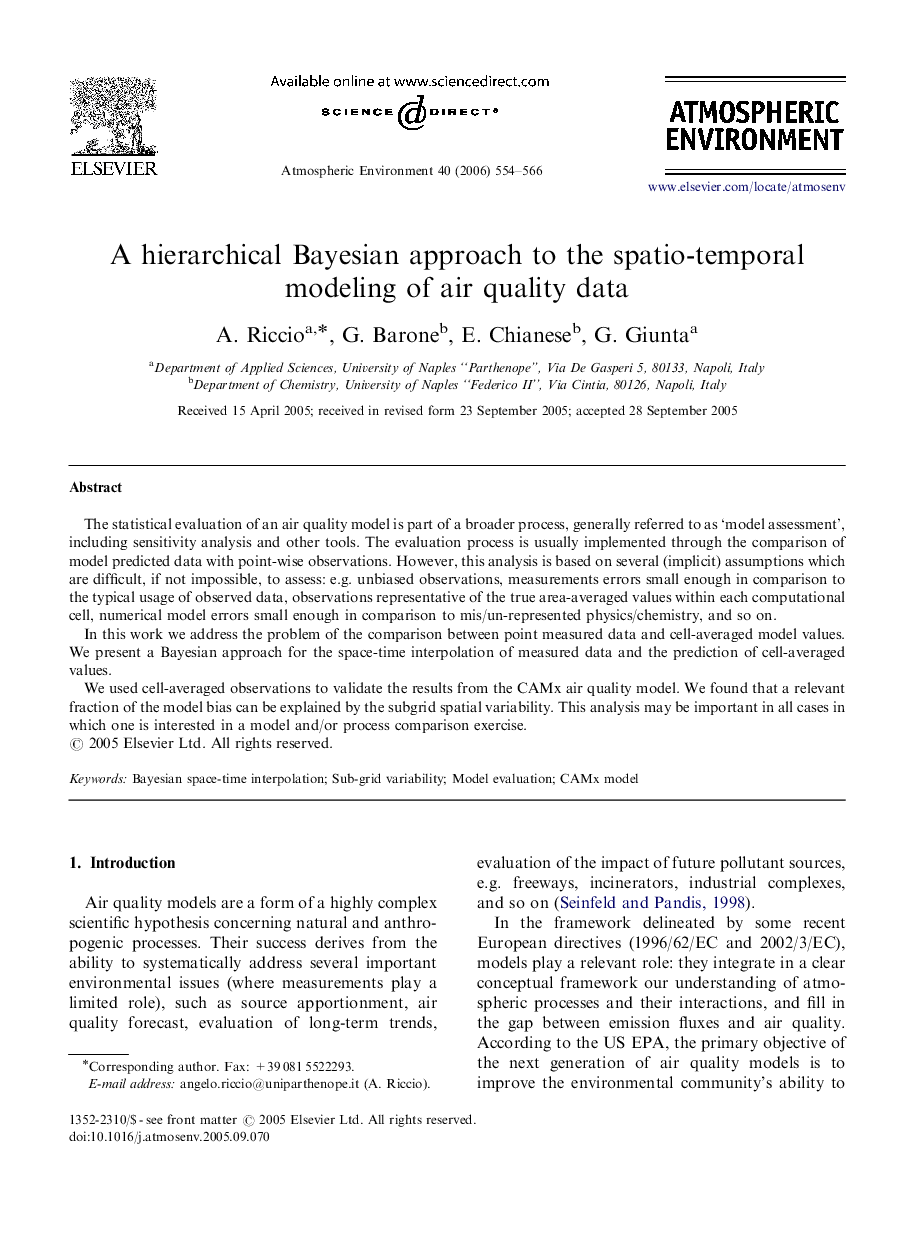| Article ID | Journal | Published Year | Pages | File Type |
|---|---|---|---|---|
| 4443701 | Atmospheric Environment | 2006 | 13 Pages |
The statistical evaluation of an air quality model is part of a broader process, generally referred to as ‘model assessment’, including sensitivity analysis and other tools. The evaluation process is usually implemented through the comparison of model predicted data with point-wise observations. However, this analysis is based on several (implicit) assumptions which are difficult, if not impossible, to assess: e.g. unbiased observations, measurements errors small enough in comparison to the typical usage of observed data, observations representative of the true area-averaged values within each computational cell, numerical model errors small enough in comparison to mis/un-represented physics/chemistry, and so on.In this work we address the problem of the comparison between point measured data and cell-averaged model values. We present a Bayesian approach for the space-time interpolation of measured data and the prediction of cell-averaged values.We used cell-averaged observations to validate the results from the CAMx air quality model. We found that a relevant fraction of the model bias can be explained by the subgrid spatial variability. This analysis may be important in all cases in which one is interested in a model and/or process comparison exercise.
